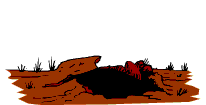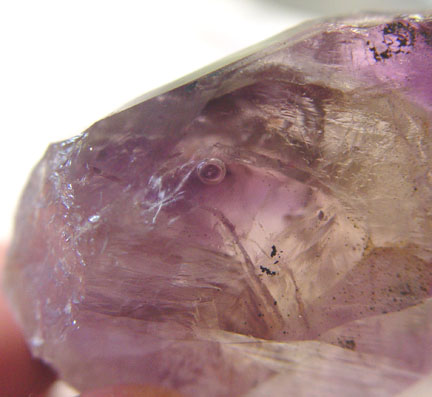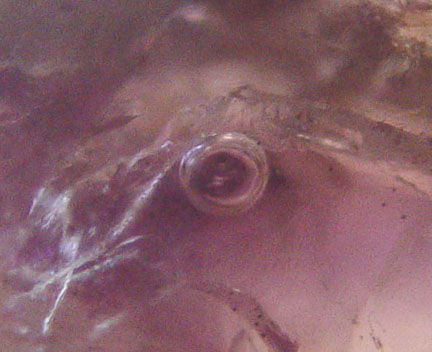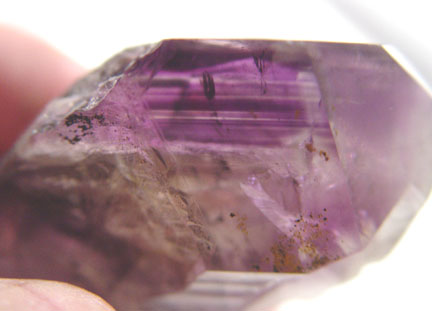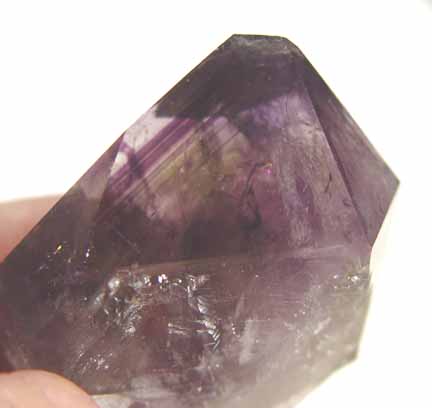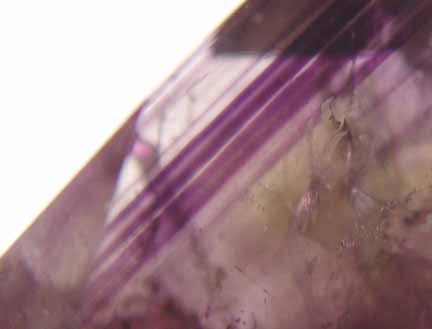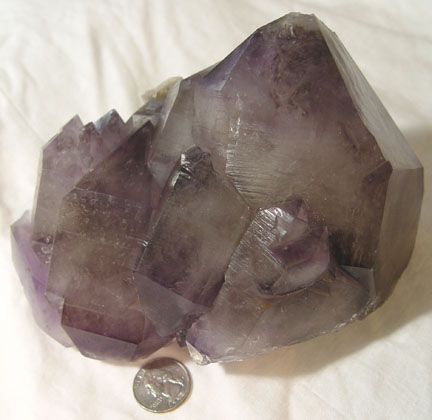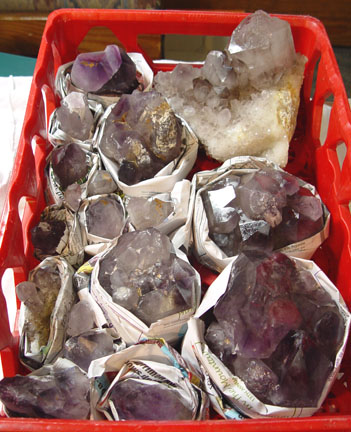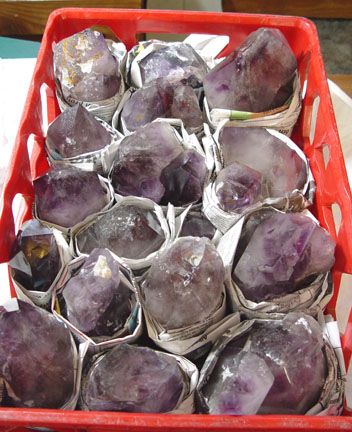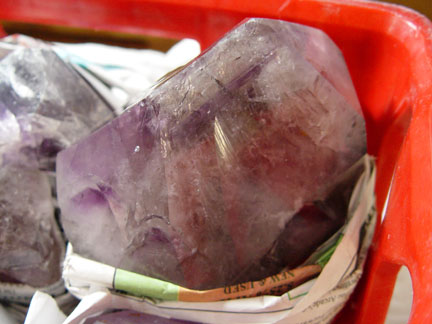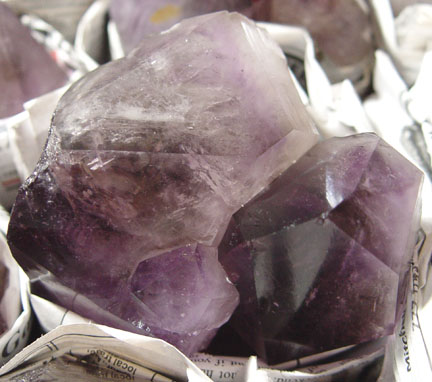Fieldtrip Report:
Diamond Hill Machine Dig!
Antreville, S.C.
April 2008Report by: Rick Jacquot
After cleaning my material, the first notable feature of the crystals aside from some being grape jelly purple and huge, are the enhydro inclusions. I observed the first one with Sandy one evening while showing her one of my finds. We both saw something move in the crystal and I was thrilled to see a large bubble move back and forth about an inch inside the rock. I have since found that about fifty to sixty percent of what I have has at least one enhydro inclusion or more. Some also contain some form of solid material (dirt/rock?) in fluid. The next observation I made are the perfect phantoms in some of the crystals. These phantoms are as well defined as the ones from the smoky crystals from 2005. We also brought back a great deal of dark purple facet grade material that I am sure will be cut into fine gemstones. The majority of the material collected was amethyst, there were some large smoky crystals in the collection area as well. The amethyst and smoky colors in the crystals are caused by iron or manganese impurities in the rock, natural radiation, radiation from surrounding rocks in the area, or a little of both.
The following specimens are from my collection unless otherwise noted.
